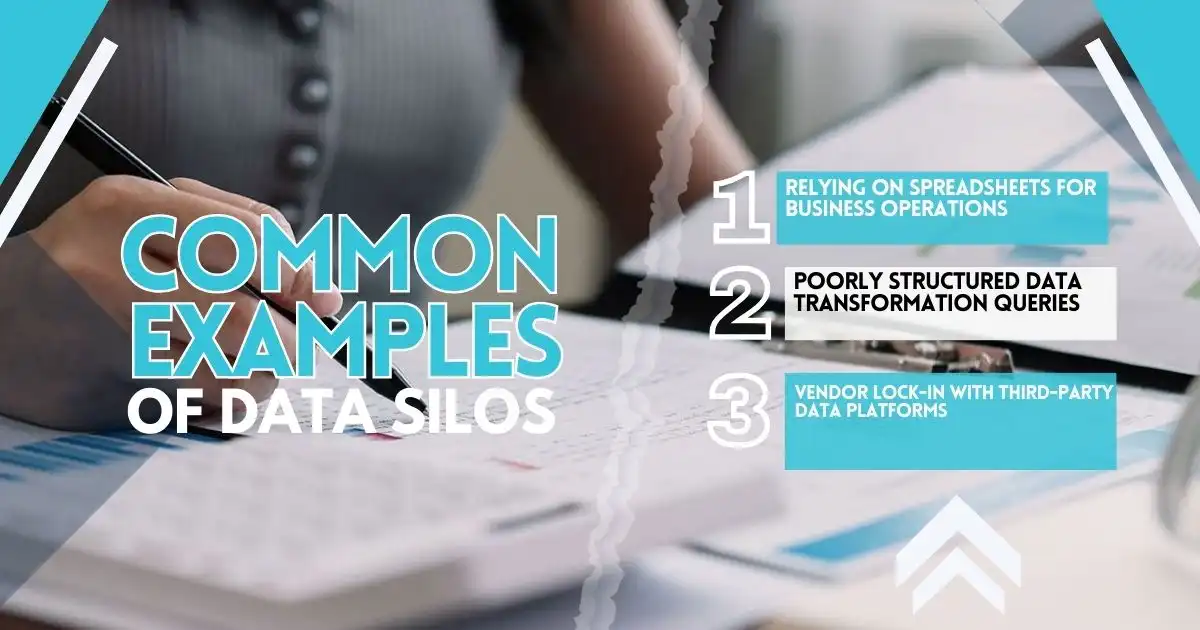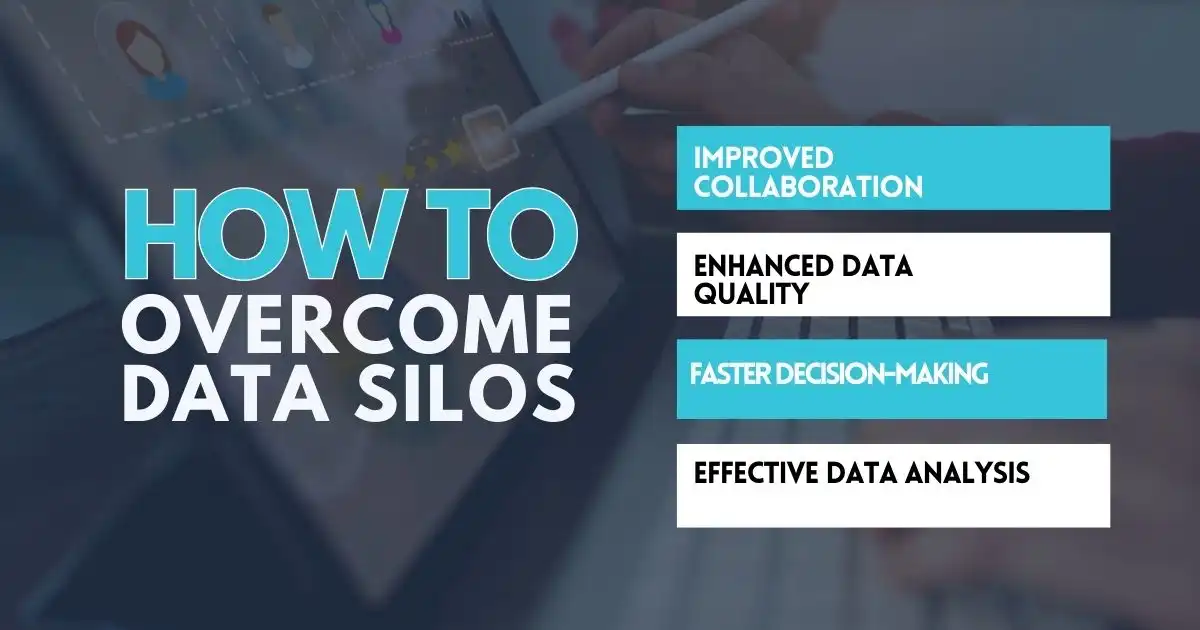Data is an essential asset for businesses, and managing it effectively is key to an organization’s success. However, many companies face a major obstacle—data silos—where information is isolated within departments, preventing easy access and sharing across the organization.
This separation not only impedes communication and collaboration but also limits the ability to make informed decisions, leading to inefficiencies and missed opportunities. Data silos result in inaccurate data, fragmented business strategies, and hindered data analysis, which ultimately slows down decision-making and growth.
To thrive in an increasingly data-driven world, organizations need to break down these barriers. But how can businesses overcome the challenge of data silos? What You Need to Know About Data Silos.
What You Need to Know About Data Silos
Data is a valuable asset for any company, but its usefulness depends on how well it is used to support business decisions. When data is stored separately in different parts of a company, it creates gaps that can make decision-making more difficult.
The term “silo” comes from farming, where different grains are stored in separate containers. In businesses, data silos work the same way—different teams collect, store, and manage data separately, restricting access to only certain groups. This separation may be based on departments, job roles, or even company acquisitions.
Many companies also store data based on type. Structured data is often kept in multiple data warehouses, either on-site or in the cloud. Meanwhile, unstructured and real-time data is stored in a separate data lake. This division makes data management more complicated and reduces the overall usefulness of the data.
Hidden Risks of Data Silos in Business

Data silos create major challenges for organizations, especially as data becomes increasingly essential for informed decision-making. When departments store data separately, it limits access and sharing, leading to confusion, inefficiencies, and missed opportunities.
This lack of integration hinders collaboration and impedes teams from making accurate, timely decisions. Addressing data silos is important for improving efficiency and achieving long-term success.
1. Impeded Collaboration
When departments cannot easily share data, collaboration becomes difficult. For example, if the sales team’s data is separate from the finance department’s records, it becomes harder to evaluate business performance effectively. Teams may miss opportunities to work together to create more effective strategies.
2. Inaccurate or Incomplete Data
Because data is fragmented in silos, it increases the likelihood of having outdated, duplicate, or incomplete data. This lack of accurate information can lead to poor decision-making and missed business opportunities.
3. Hindered Business Strategy
Effective business planning requires a complete view of an organization’s data across different functions. Data silos make it hard to gather insights from multiple sources, thus impeding decision-making and strategic planning. Without centralized data, organizations may find it difficult to devise successful marketing, financial, and operational strategies.
4. Limited Data Analysis
Data scientists and analysts depend on integrated data to create comprehensive business intelligence. However, if data is siloed, it limits their ability to analyze trends and provide useful insights, ultimately affecting the company’s ability to innovate and stay competitive.
Common Examples of Data Silos

Data does not become siloed on its own. The way organizations handle data often leads to these silos, usually unintentionally. Below are some common situations where data access becomes restricted.
Relying on Spreadsheets for Business Operations
Spreadsheets remain widely used for processing and analyzing data in many businesses. While they are easy to use, they often create challenges for data management teams.
Employees in marketing, finance, and other departments use advanced spreadsheet formulas to handle data efficiently. However, once data is processed, it often remains stored in individual files instead of a centralized system. This limits accessibility and integration with other data sources.
Spreadsheets also become silos when they transition from a temporary tool to a core part of business operations. Relying too heavily on them can create inefficiencies due to storage limits and difficulties in applying company-wide data governance policies.
Improving Data Accessibility from Spreadsheets:
- Identify large spreadsheets essential to business operations.
- Assess if they are inefficient due to size, formulas, or macros.
- Consider moving data to a more scalable system, such as a cloud data warehouse, to improve accessibility and performance.
Poorly Structured Data Transformation Queries
When combining data from multiple sources, such as finance, marketing, and sales, inconsistencies can arise. Different naming conventions must be standardized, and additional queries are often required for reporting purposes.
Over time, transformation queries become increasingly complex. Lengthy SQL queries may only be understood by the person who created them, leading to inefficiencies. In some cases, essential data does not make it through the pipeline, causing discrepancies in reports. Analysts may notice unexpected changes in metrics but struggle to trace the source due to unclear query structures.
Organizing Data Transformation More Effectively:
- If queries are handled internally, break them into smaller steps and store intermediate results in tables to verify data quality.
- Consider using automated transformation solutions that apply predefined rules to ensure consistency. Some platforms also offer no-code interfaces for managing transformation queries more efficiently.
Vendor Lock-In with Third-Party Data Platforms
Many businesses use ETL (Extract, Transform, Load) solutions to collect and analyze data from various sources. While these tools offer convenient dashboards and reporting features, some create dependency issues by restricting access to stored data.
For example, platforms like Salesforce Marketing Cloud (Datorama) provide detailed reports on marketing performance. However, businesses may find that data cannot be exported to their own systems or combined with other insights.
This reliance on a single vendor can lead to challenges, especially if pricing policies change. Losing access to the platform could also mean losing historical data.
Avoiding Data Lock-In:
- Choose third-party platforms that allow full access to your data.
- Opt for solutions that let you store data in your cloud warehouse or provide flexible data management options.
- Ensure that employees can access and use the data independently of vendor restrictions.
By addressing these common causes of data silos, businesses can improve data management and ensure that valuable insights remain accessible to the right teams.
How to Overcome Data Silos

Breaking down data silos is important for any business aiming to improve its data management. With the right data management strategy and technologies, companies can create integrated systems that allow data to flow seamlessly across departments.
This can be achieved through centralized data repositories, such as data warehouses or data lakes, which store data in a way that makes it easily accessible for analysis across the organization. Benefits of Breaking Data Silos:
- Improved Collaboration – Teams can easily share data, leading to better collaboration and more informed decisions.
- Enhanced Data Quality – A unified system ensures data is up-to-date and accurate across all departments.
- Faster Decision-Making – With access to complete data, business leaders can make quicker, more informed decisions.
- Effective Data Analysis – Consolidating data makes it easier for analysts to gain insights and apply analytics tools effectively.
The Silent Barrier to Growth
Data silos aren’t just a technical issue—they’re a silent barrier that holds back a company’s full potential. Like a puzzle with missing pieces, fragmented data keeps businesses from seeing the bigger picture. The world is moving fast, and those who fail to break down these silos risk being left behind.
As teams work in isolation, they’re not only limiting themselves, but they’re also limiting the entire organization’s ability to grow and adapt. Imagine running a race but only using one leg—this is what data silos do to your business. It’s time to move beyond outdated systems and embrace integrated data strategies.
The choice is clear: either continue stumbling in the dark or shine a light on the path ahead. Businesses that prioritize breaking down silos will not only improve efficiency but also open the door to innovation, growth, and a competitive edge. The question is, are you ready to reach that potential?
FAQs
What is a data management strategy and why is it important?
A data management strategy refers to the approach an organization uses to collect, store, organize, and utilize data effectively. This strategy ensures that data is accurate, accessible, and secure. A strong data management strategy is important for businesses as it helps improve data quality, enhances business performance, and enables informed decision-making.
How does data integration improve business performance?
Data integration involves combining data from multiple sources to create a unified view of the information. By integrating data, businesses can break down silos and ensure that all departments have access to the same data, leading to improved business performance.
What is the role of centralized data in decision-making?
Centralized data refers to a system where all business data is stored in one place, making it easily accessible to all relevant teams within an organization. Centralized data is vital for informed decision-making because it provides a single, consistent source of truth.
How does business intelligence contribute to effective business strategy?
Business intelligence uses data analysis to turn raw data into actionable insights. These insights help shape business strategy. With data analysis, companies can track trends, monitor performance, and adjust to market changes for better decisions.
